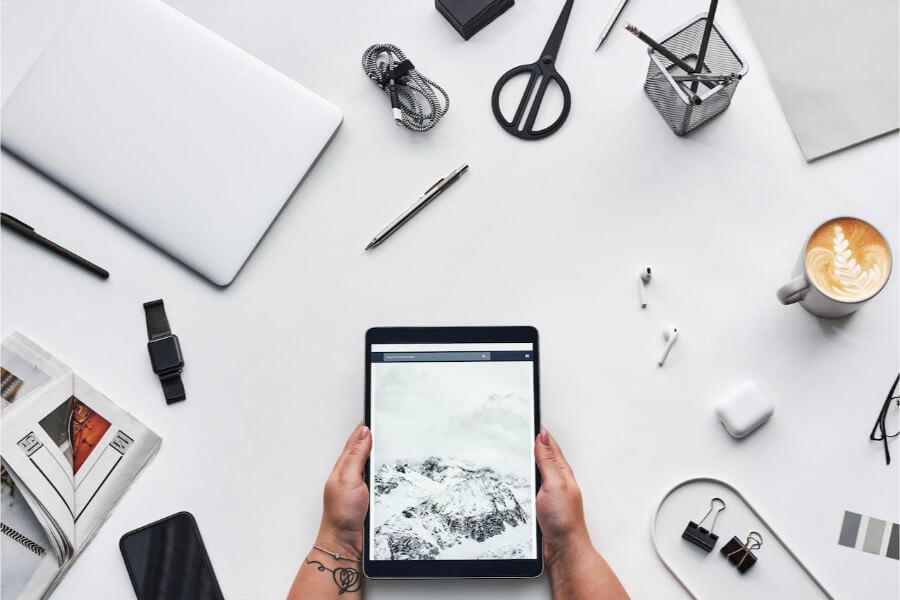
In the world of graphic design, finding the perfect balance between creativity and efficiency is often seen as a challenging endeavor. Designers aim to produce visually stunning and unique creations while also meeting tight deadlines and working within budget constraints. This article explores the key principles and strategies for achieving this delicate balance in the field of graphic design.
Understanding the Duality
Creativity: The Heart of Design
Creativity is the essence of graphic design. It’s what sets a design apart, makes it memorable, and communicates a brand’s identity effectively. It involves thinking outside the box, experimenting with new ideas, and pushing the boundaries of conventional design.
However, creativity can be elusive, and designers often face creative blocks or burnout. To maintain a steady flow of creativity, it’s essential to cultivate a creative mindset and seek inspiration from various sources, such as nature, art, or other designers’ work.
Moreover, creativity isn’t just about aesthetics. It also involves understanding the client’s vision and goals, which may require innovative problem-solving. A creative designer can balance aesthetic appeal with functionality and purpose.
Efficiency: The Backbone of Productivity
Efficiency in graphic design refers to the ability to complete tasks with minimum wasted time, effort, or resources. It involves optimizing your workflow, using the right tools and techniques, and adhering to project timelines. Efficiency ensures that your creative ideas can be brought to life without unnecessary delays.
Efficiency in graphic design can be likened to efficiencies found in other domains, such as meal preparation. For instance, with services like meal kit delivery with pre-measured and prepped ingredients, you not only sidestep the hassle of grocery shopping but streamline your cooking process significantly. Similarly, using organized workflows and effective tools in design bridges creativity with rapid project completion.
Efficiency starts with well-organized design files and assets. By creating a structured system for storing and accessing design elements, you can save time and reduce frustration during the design process. Utilizing free project management software can also help streamline collaboration and project tracking.
Finding the Balance
Start with a Solid Plan
Balancing creativity and efficiency begins with a well-thought-out plan. Before diving into a design project, take the time to define your goals, target audience, and project scope. A clear plan acts as a roadmap, allowing you to channel your creativity effectively and prioritize tasks efficiently.
Moreover, a comprehensive plan includes a timeline with milestones and deadlines. This not only helps you manage your time effectively but also ensures that your creative work aligns with the project’s overarching schedule. You can also use a color code calendar when scheduling your goals. It will help you visualize your productivity and make better planning.
Embrace Technology
Technology has revolutionized the field of graphic design, offering a myriad of tools and software that enhance both creativity and efficiency. For instance, white-label graphic design tools like Pixelixe.com empower designers to create stunning visuals quickly by providing a library of customizable templates and automation features.
Beyond design tools, technology facilitates efficient collaboration. Cloud-based platforms enable real-time sharing and editing of design files, reducing communication gaps and streamlining the review process. Additionally, project management software helps teams stay organized, track progress, and meet deadlines.
Collaborate and Seek Feedback
Collaboration with fellow designers or clients can inject fresh perspectives into your work. Sharing ideas, brainstorming, and seeking feedback can lead to innovative solutions and improvements in efficiency. Constructive criticism helps refine your creative ideas and ensures they align with the project’s goals.
Effective collaboration also involves clear communication. Regular check-ins, status updates, and project reviews help keep everyone on the same page, preventing misunderstandings and reducing rework.
Time Management
Effective time management is crucial for balancing creativity and efficiency. Set aside dedicated time for brainstorming and creative exploration, and separate it from the production phase where you focus on execution and meeting deadlines. Tools like task management apps can help you stay organized and on track.
Time management also includes prioritizing tasks based on their importance and deadlines. By identifying critical milestones, you can allocate resources appropriately and avoid last-minute rushes.
Learn from Experience
Experience is a valuable teacher in the design field. Reflect on past projects to identify what worked well in terms of creativity and efficiency and what didn’t. Continuous learning and adaptation are essential for growth as a designer.
Moreover, consider keeping a design journal where you document your creative process and insights gained from each project. This can serve as a valuable resource for future endeavors and help you refine your approach.
Case Studies: Striking the Balance
To illustrate the principles discussed, let’s look at a few case studies of successful graphic design projects that effectively balanced creativity and efficiency:
Apple’s Product Packaging: Apple’s product packaging is known for its minimalist and elegant design. They balance creativity by creating visually appealing packaging while maintaining efficiency through standardized packaging sizes and materials.
Nike’s Logo Evolution: Nike’s iconic swoosh logo has evolved over the years, showcasing their ability to blend creativity with efficiency. Each update retains the brand’s essence while staying relevant to contemporary design trends.
Magazine Layouts: Magazine designers often face tight publication schedules. They balance creativity by designing eye-catching layouts while efficiently adhering to printing deadlines. Collaborative efforts between designers and editors are critical in these projects.
Conclusion
Balancing creativity and efficiency in graphic design is an ongoing journey. By understanding the duality of these aspects, planning effectively, leveraging technology, collaborating, managing time, and learning from experience, designers can create remarkable visuals that not only captivate audiences but also meet project goals and deadlines.
Remember that finding the right balance is a unique process for each designer and project. Embrace the challenge, stay inspired, and keep honing your skills to master the art of design that marries creativity with efficiency.